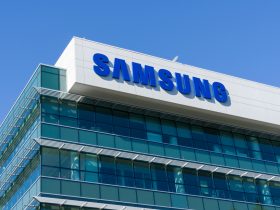A new AI-powered technology system that can see around corners has been developed by scientists funded by the U.S. military. The tech uses lasers, which can bounce off walls to move around corners. When these laser beams then encounter objects that are hidden from view, the data, in the form of photons, is sent back to the device. In their original form, the photon patterns returned to the device look like random patterns to the naked eye. However, the latest technology in the world of AI algorithms is able to interpret those patterns and present an accurate image of the object or objects the laser beam encountered.
The technology was developed by a team of scientists at California’s Stanford University. Sending laser beams around corners and getting back the parcels of light, photons, that form seemingly random ‘speckle patterns’ is not new technology. But the AI algorithms able to decipher and reconstruct those speckle patterns into something closely approximate to what a human eye would see, is.
Chris Metzler, a Stanford University research fellow at the Ivy League institute’s electrical engineering faculty who worked on the study, commented:
“We recover an image of the obscured object using algorithmic techniques that combine ideas from optics, statistics and machine learning. The shape of the hidden object is encoded in the structure of the speckle pattern.”
“An experimental version of the system placed about a metre away from a wall was able to pick out lettering on an object that was just a few millimetres tall, in a fraction of a second”.

Source: The Times
The technology does have limitations and relies on the wall the laser is bounced off being in the line of sight of both the device and any objects hidden around a corner in front of the device. The technology could be further developed as the AI algorithm that deciphers the speckle patterns of photons returned to device is improved, or by increasing the strength of the laser used. However, the latter option probably wouldn’t be viable in public settings.
Another drawback is that the technology is not currently able to precisely place the location of objects encountered by the laser. So an image returned could be immediately behind the corner or located several metres back. That could be resolved by pairing the technology with another that is able to accurately place objects based on how long it takes returning photons to reflect off walls.
While the technology has been funded by the U.S. military and has obvious military applications such as allowing spy satellites to see into caves or other ordinarily inaccessible location, or by soldiers on the ground storming a location that could contain hostile resistance, there are also plenty of potential civilian applications. Driverless cars have been pinpointed as one such application. The technology could allow them to anticipate potential dangers located around corners that other sensors would have no means of detecting.










Leave a Reply